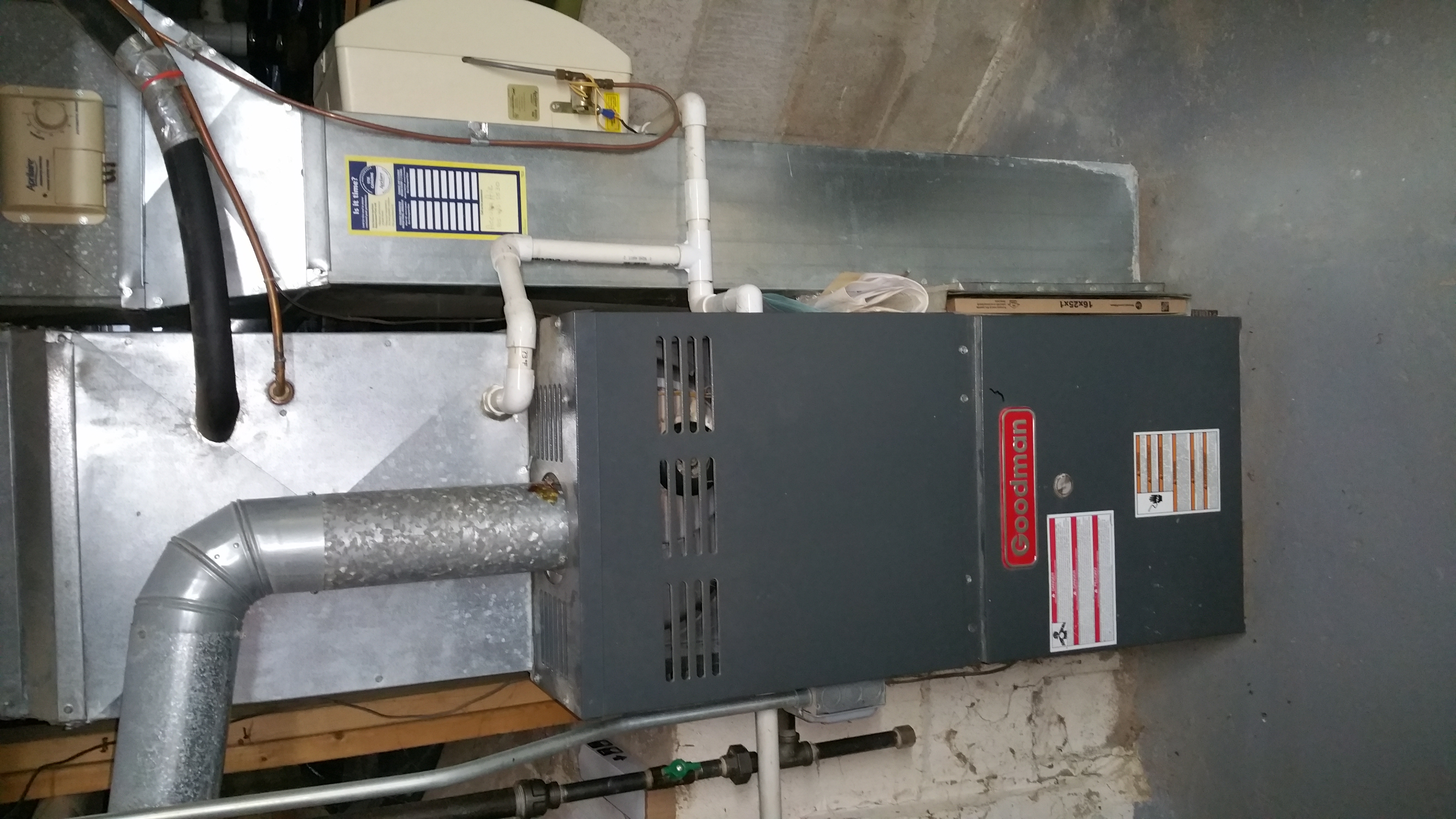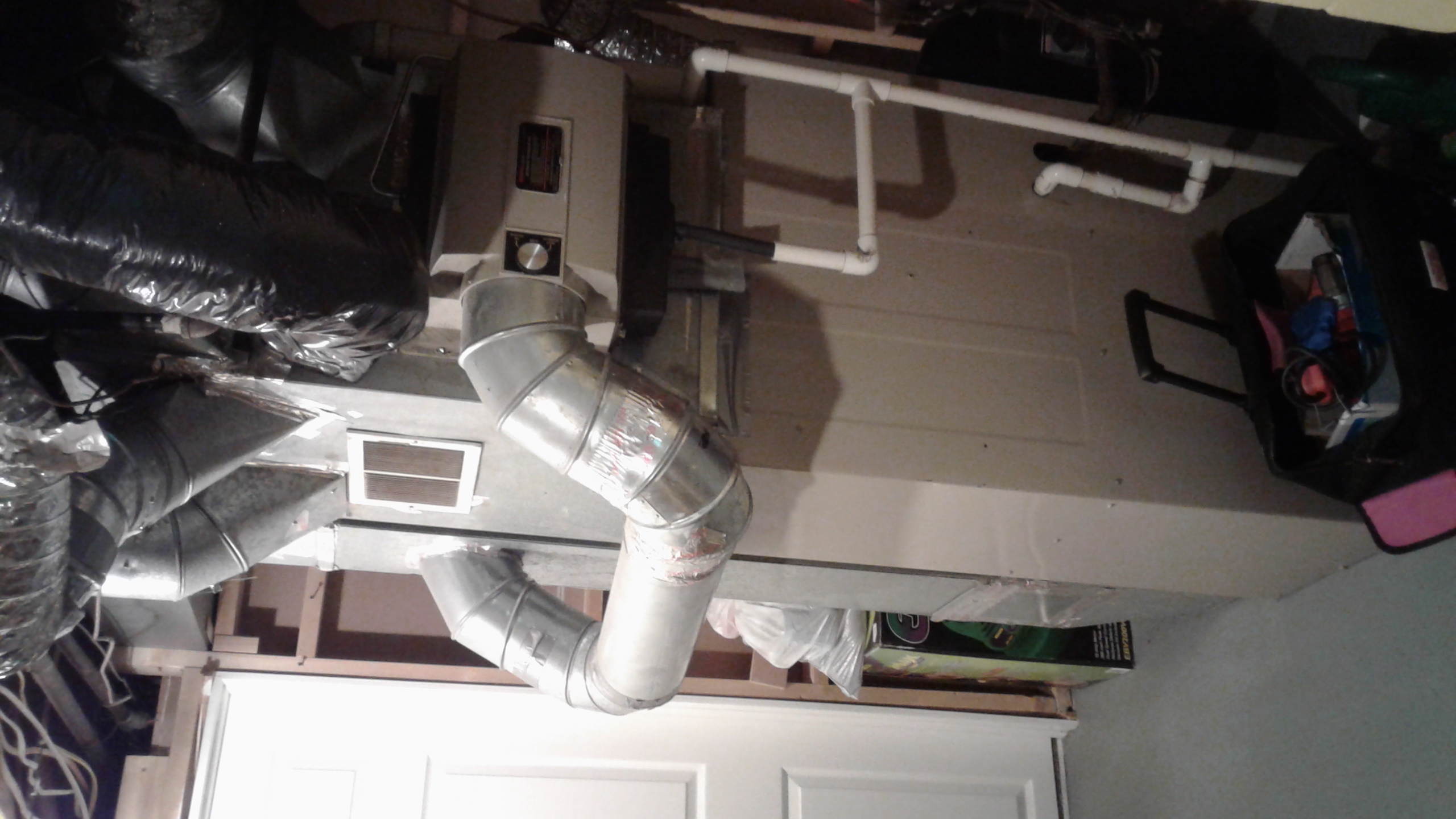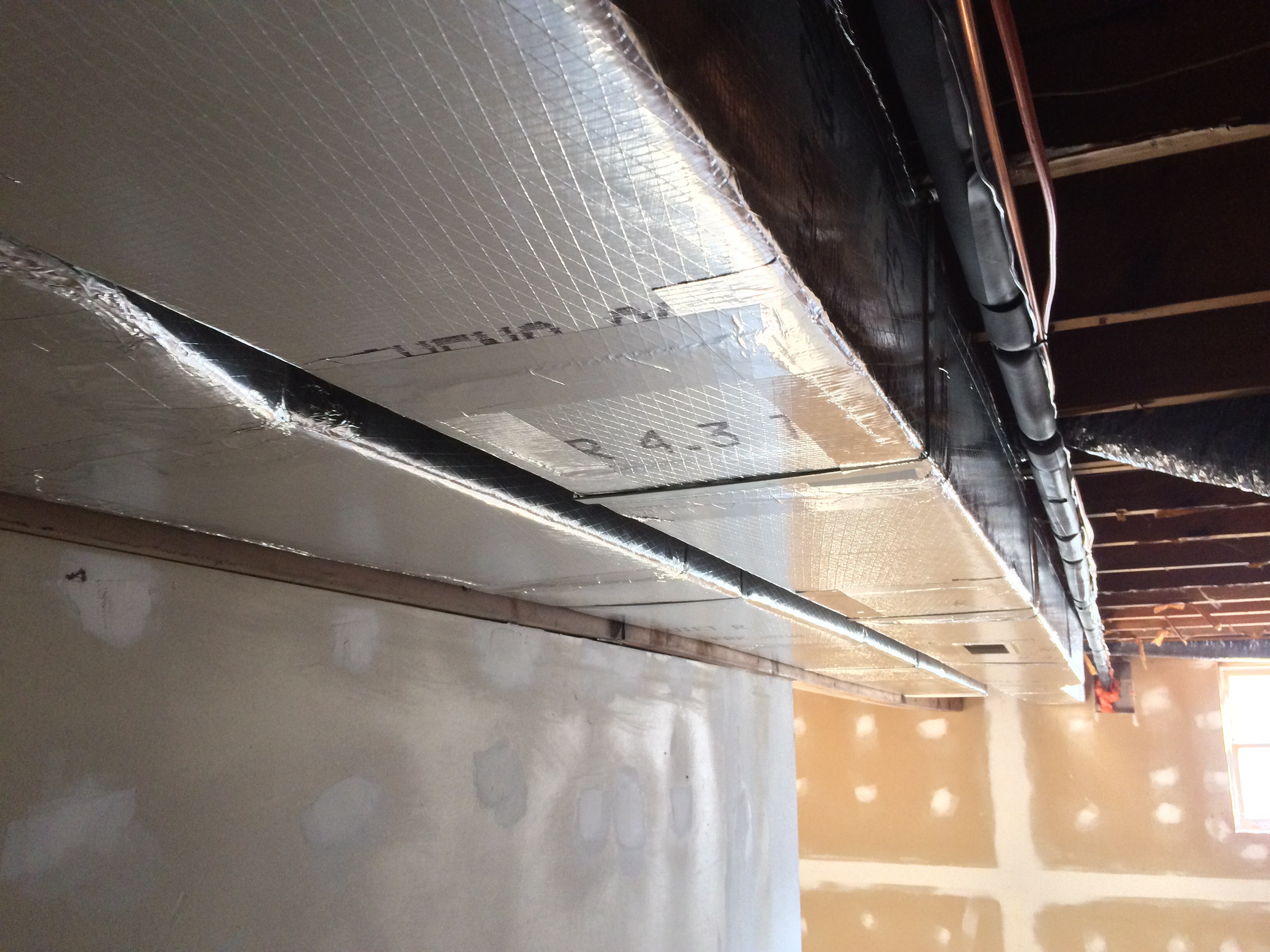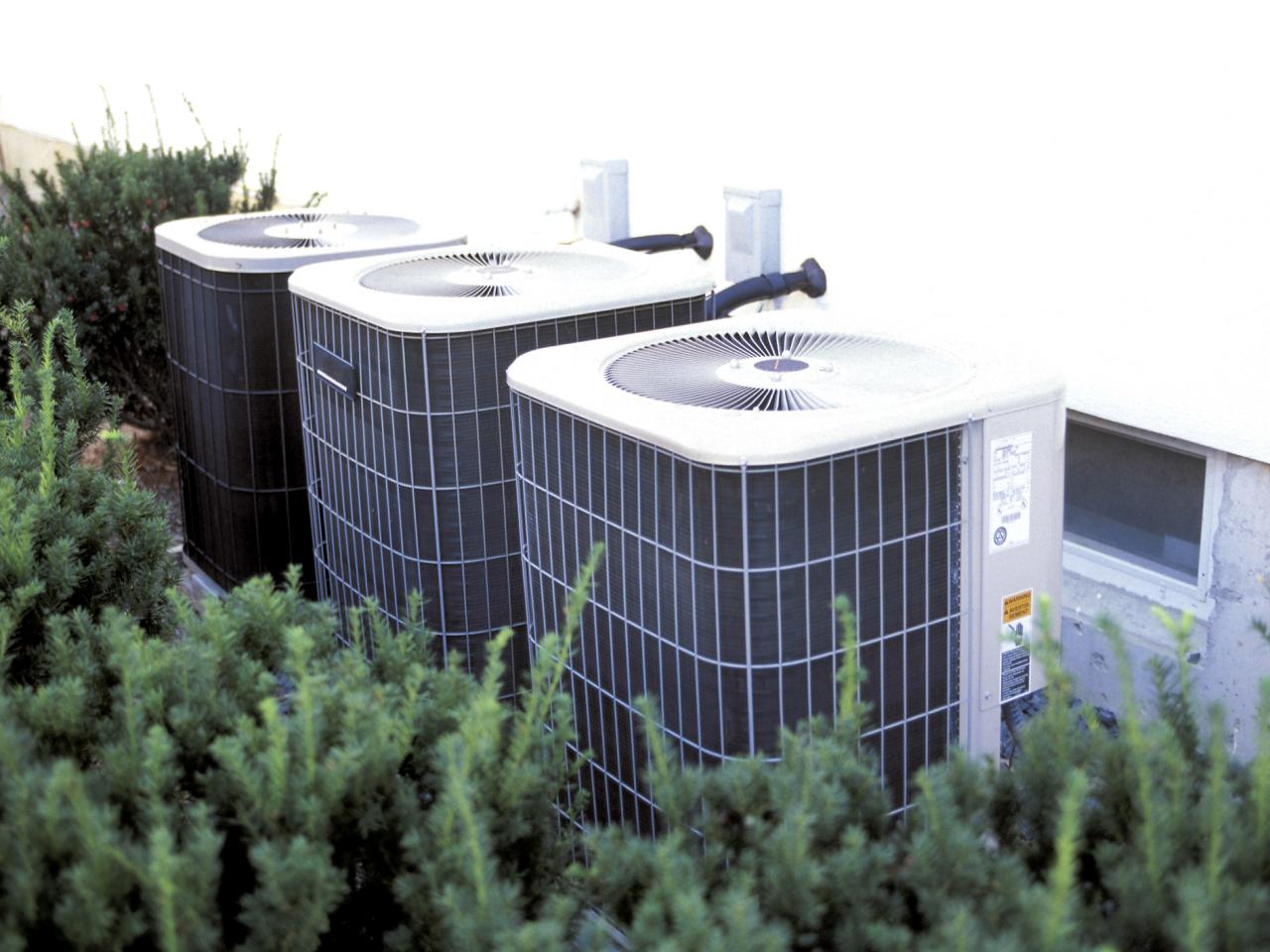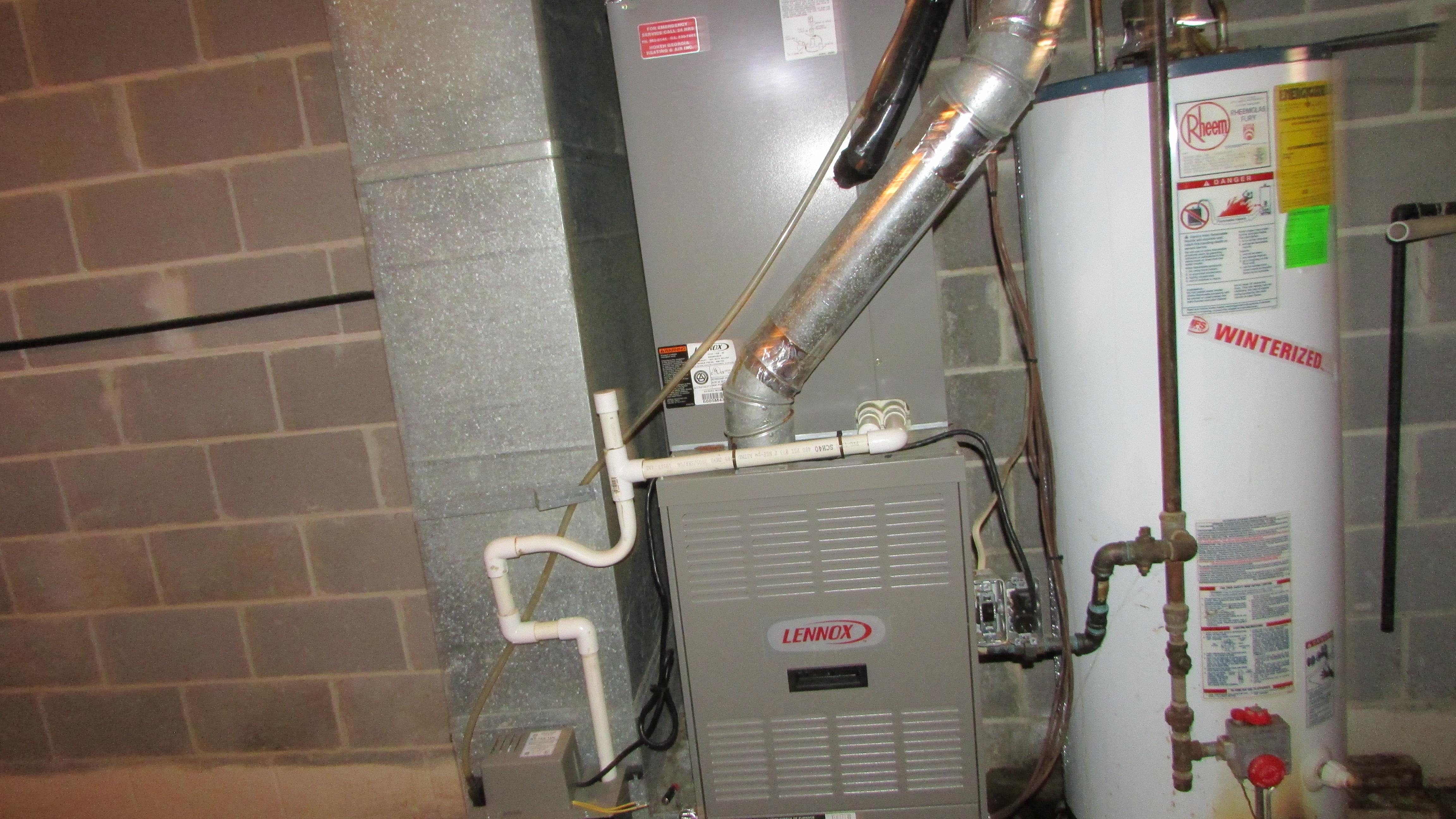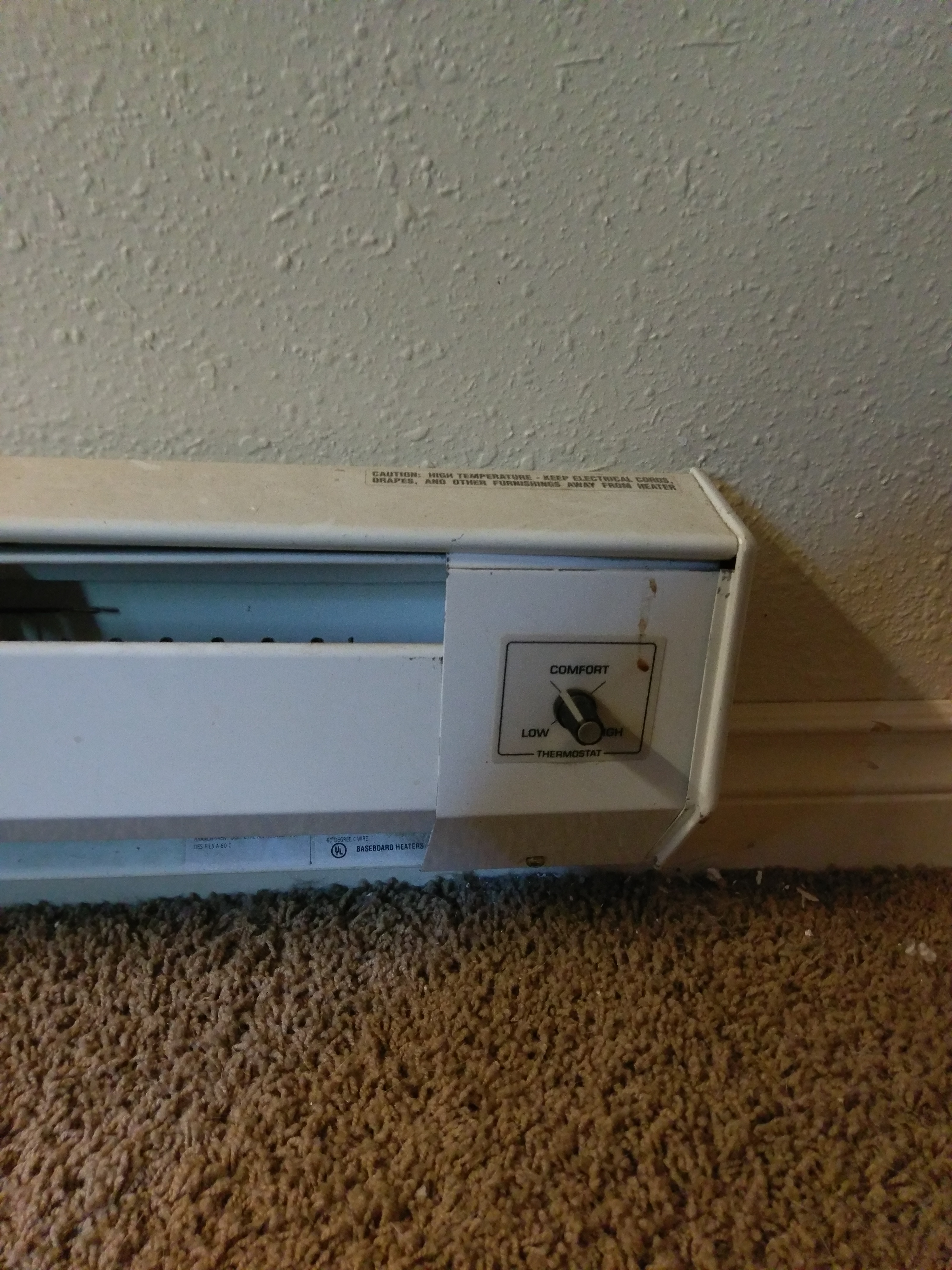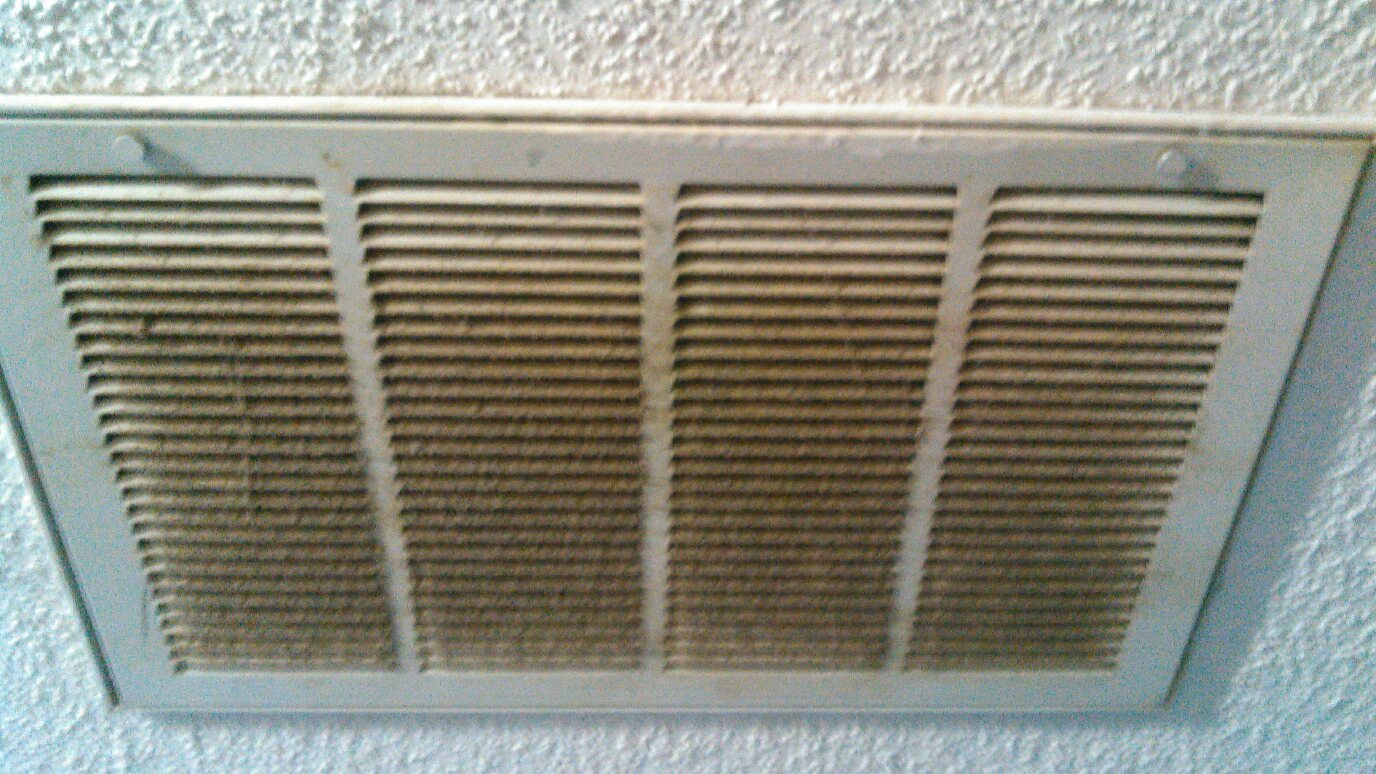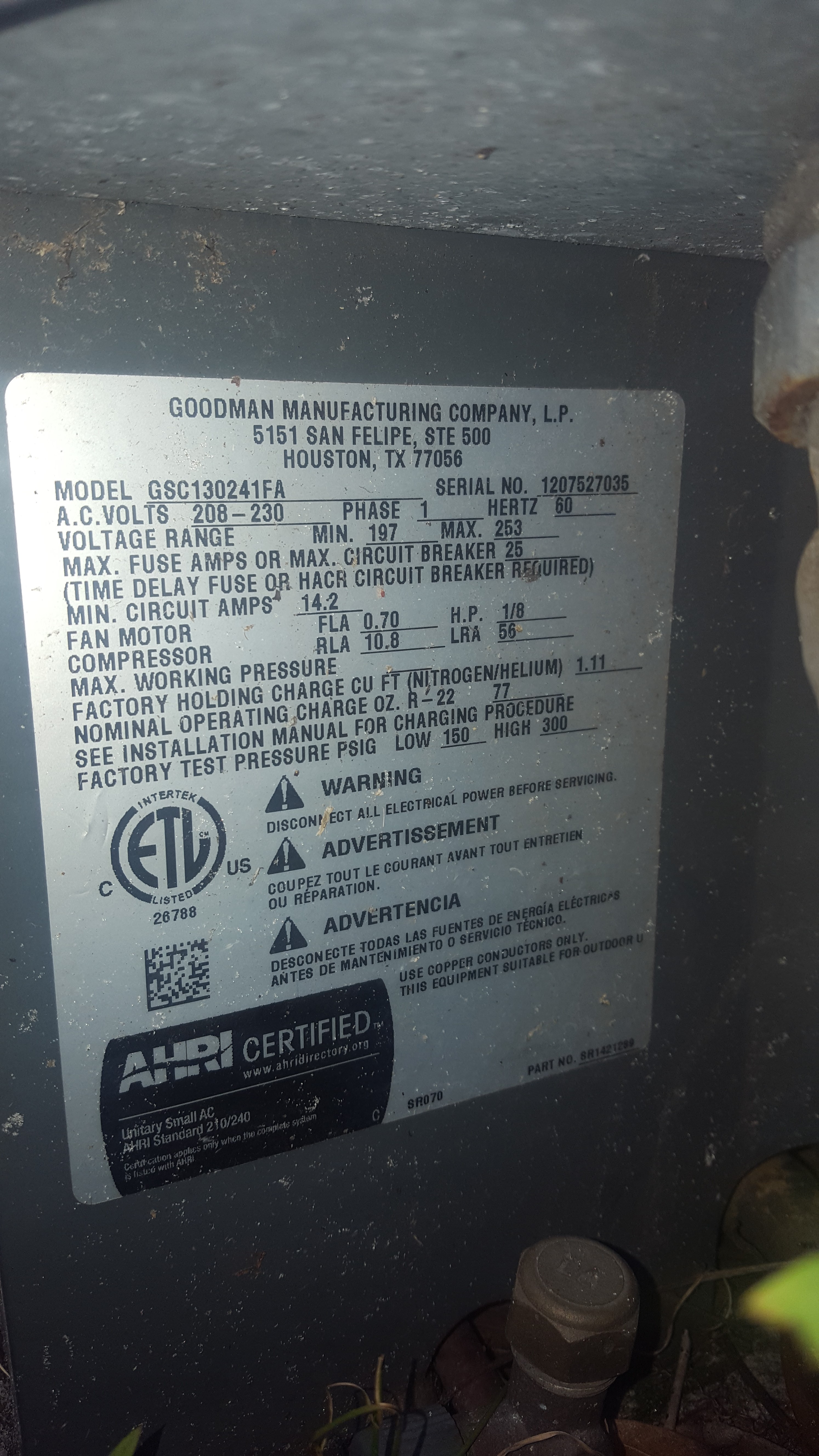The furnace is a Goodman brand furnace and is made in 2014. When operated with the thermostat the furnace operated in satisfactory condition. The filter was a standard 1" filter and was slightly dirty at the time of the Inspection.
Upon reviewing the picture of the roof area it appears that the condition of the shingles is in fair condition. There are areas of the shingles that have cupping and curling. It is also noted that there are several lifting shingles this may be due to nail pops.
This is a gas fired forced air furnace. It is an updraft high-boy. It has the attached humidifier on the side. You can see the white pvc condensation pipes going to the floor drain. The round ducts are the side-ducts going to the floor registers above the furnace. It is about 8 years old according to the manufacturers sticker on the opposite side.
“Condensation in Ductwork” Condensation will build up in the ductwork if the ducts do not have the proper slope. The ductwork needs to lower 1/4" for every foot of ductwork. The slope should be going away from the furnace or air conditioner. This will keep the condensation from collecting in the ducts and causing deterioration of the ducts.
Pictured here is the supply and return ducts of an oil forced air heating system. The duct material is fiberglass duct board with an R value of 4.3. The supply and return ducts are in good working condition with no visible defects.
I believe these are hydronic air hvac systems in place by this house. These three are part of the central heating and air that pushes air through each separate part of the house. They are electronically functional and new for the residental building.
The picture i have chosen is the layout of a oil furnace in the basement. It has a stack leading to the duct work of the house and the duct work separates into two separate parts that heat different sections of the house.
Image I have is gas fired heat unit. This lesson I am learning what to look for and how they should operate. How they are feed by different source mediums to get the home heated. But not just heated but the safety measures in place and what rating should be.
Image I chose to wright about is the gas meter. Simple but important equipment for your home. to control gas flow coming into home, how much gas coming into home. Also to make sure lines are marked and you dont dig bust the line.
Building Cavities Used as Supply or Return Ducts
Building cavities that are used as supply and return duct plenums is one of the leading causes of leaking ducts in homes today. Because building cavities are leaky homeowners may experience energy loss, increased utility bills, lower comfort levels, and the HVAC system may run less efficient. In order to use building cavities as efficient ductwork the contractor should plan for the duct at the design stage. Building cavities that are used as ducts should be avoided because of the difficulties in air sealing and insulating.
The photo that I have chosen is an image of an above ground oil tank. The tank itself will have a fill and vent valve. There will also be a smaller line that will lead into the house and connect with the furnace.
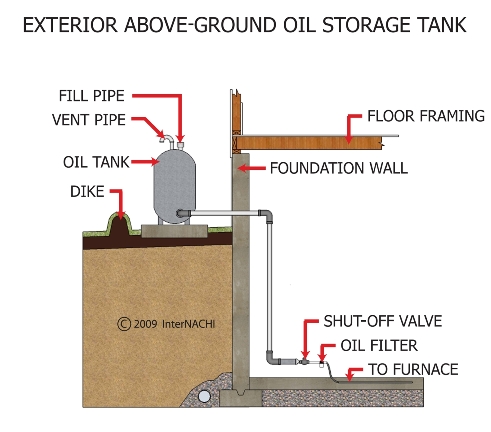
The image I chose discusses cooling equipment placement. It should be placed at least 3" off the ground and 30" from building in order to easily perform maintenance. Make sure it is also at least 10" from any other objects such as trees that would restrict airflow.
In the photograph you can see a dirty filter from an evaporator. The client said that the AC system was cleaned quarterly and that all the filters were clean. Obviously, it is not the case. With this picture, I demonstrated to the client either he had to clean the filters more often or look for another AC maintenance company.
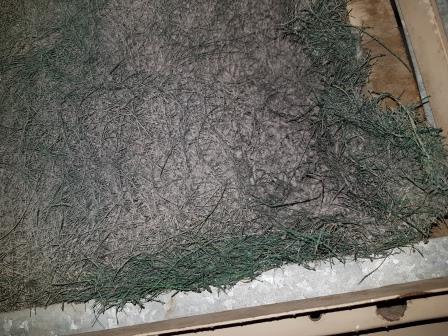
In my country (Panama), the temperature is relatively stable throughout the year at 80- 90F. The relative humidity is high in the 70-80%. In my inspections, I have found that in most commercial buildings the dampers are closed to avoid humid, warm air form going into de building. This a bad practice that can lead to sick building problems
This is a bedroom electric baseboard heater. Electric baseboards work by convection,with a an electrically heated element transferring heat to the air around it. They are the most common type of electrical heating system. At the time of the inspection, this electric baseboard was in good working order.
The article “Central Humidifiers” discusses systems built directly into a forced air heating system so that moisture is added to the air as it is heated. This is done both for the comfort of residents,and because some pathogens are more easily carried by dry air than by humid air.
This return duct for the HVAC system shows signs of dust and rust debris on the grate. It would be recommended that the vent cover be cleaned or replaced as well as the filter behind the vent cover to ensure proper efficiency of the HVAC unit.
The diagram illustrating how a hot water or heated oil system works can be a valuable tool for inspectors who might not be familiar with these types of heating systems as they are becoming less frequent in homes built these days.
The dataplate of this Goodman AC compressor indicates it was built the 7th month (July) of 2012. Using http://www.building-center.org/ one is able to “decode” the serial number. In this case, the first two digits indicate the year, the next set of two digits represent the month of the year.
If the concept that the tonnage is located in the serial number, than this unit appears to be 2 tons.
The “Aging in Place” article provides some interesting insights about the needs of elderly\aging home owners. Viewing an inspection from this perspective highlights areas that may, otherwise, go unmentioned.
A few recommendation from the article include:
-contrasting colors for surfaces and edges (like counter tops)
-removal or securing throw rug edges, runners, and mats
-modify the height of water closets
-adding fold-down seating in a shower
There are many common areas, structures, and fixtures\appliances in homes that can present safety concerns for those with limited agility, mobility, and vision.
